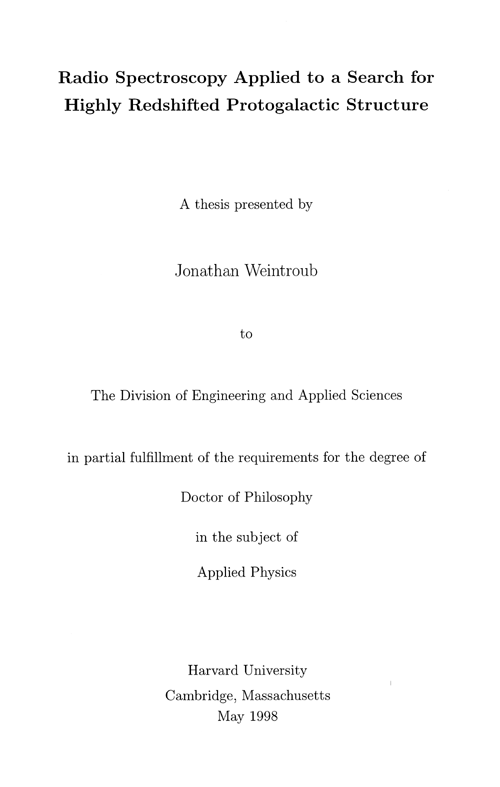
The motivation for the experiment is to provide an observational link between the
very smooth conditions presumed to exist in the primordial universe, as confirmed
by observations of the Cosmic Microwave Background (CMB) at z ~ 1000, and
the clumpy conditions that we observe locally in the hierarchy of galaxies, clusters
and superclusters. The introduction includes a literature survey and an outline of
relevant cosmological theory. A discussion of high-redshift astronomy, including past
and current searches for protoclusters, is followed by a description of our approach to
the problem.
For simplicity a point feed is used to illuminate the spherical reflector at Arecibo.
The design of the optics is discussed--based on this analysis and the radiative
characteristics of neutral hydrogen gas we estimate that it is feasible to detect a 1014
solar mass cloud in a long, although not unachievable, time span. A custom designed
radioastronomy receiver backs up the feed system. It includes analog front-end amplifiers
and filters, local oscillators and mixers, and an eight kilochannel hybrid spectrometer
with 10 kHz spectral resolution over the survey band.
We have written software to automatically reduce the large quantity of data gathered.
Radio frequency interference (RFI) pervades our system, and analysis problems
include the development of robust methods for co-adding data in the presence of
time-varying RFI, and matched filtering to recognize candidate celestial signals in
noisy data by their signature in time and frequency. Our sensitivity is limited by
interference rather than thermal noise. The outcome of the experiment is negative,
and we conclude by setting a limit on the mass of protoclusters in our search volume.
Thesis Supervisor: Paul Horowitz
Title: Professor of Physics
DOWNLOAD THE THESIS